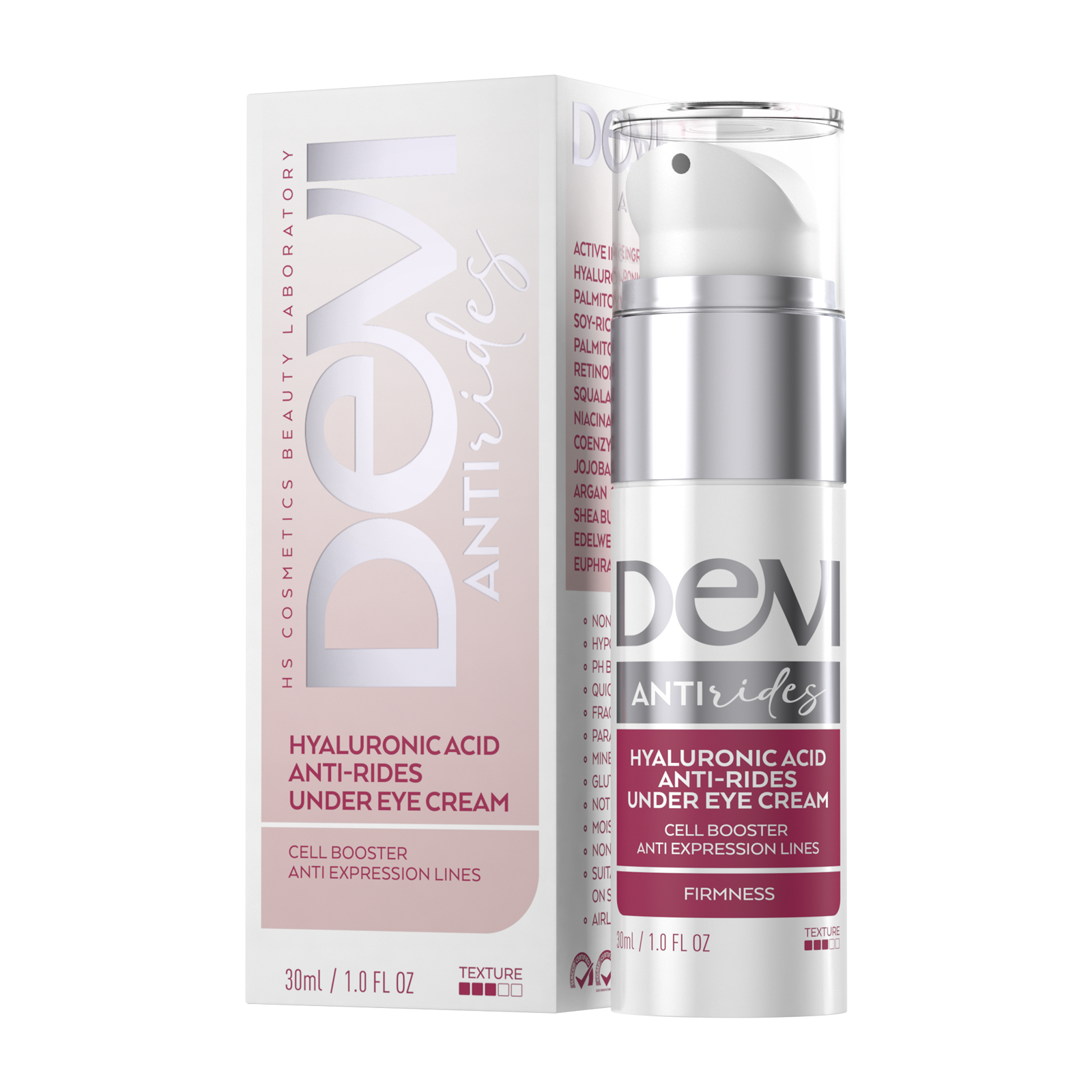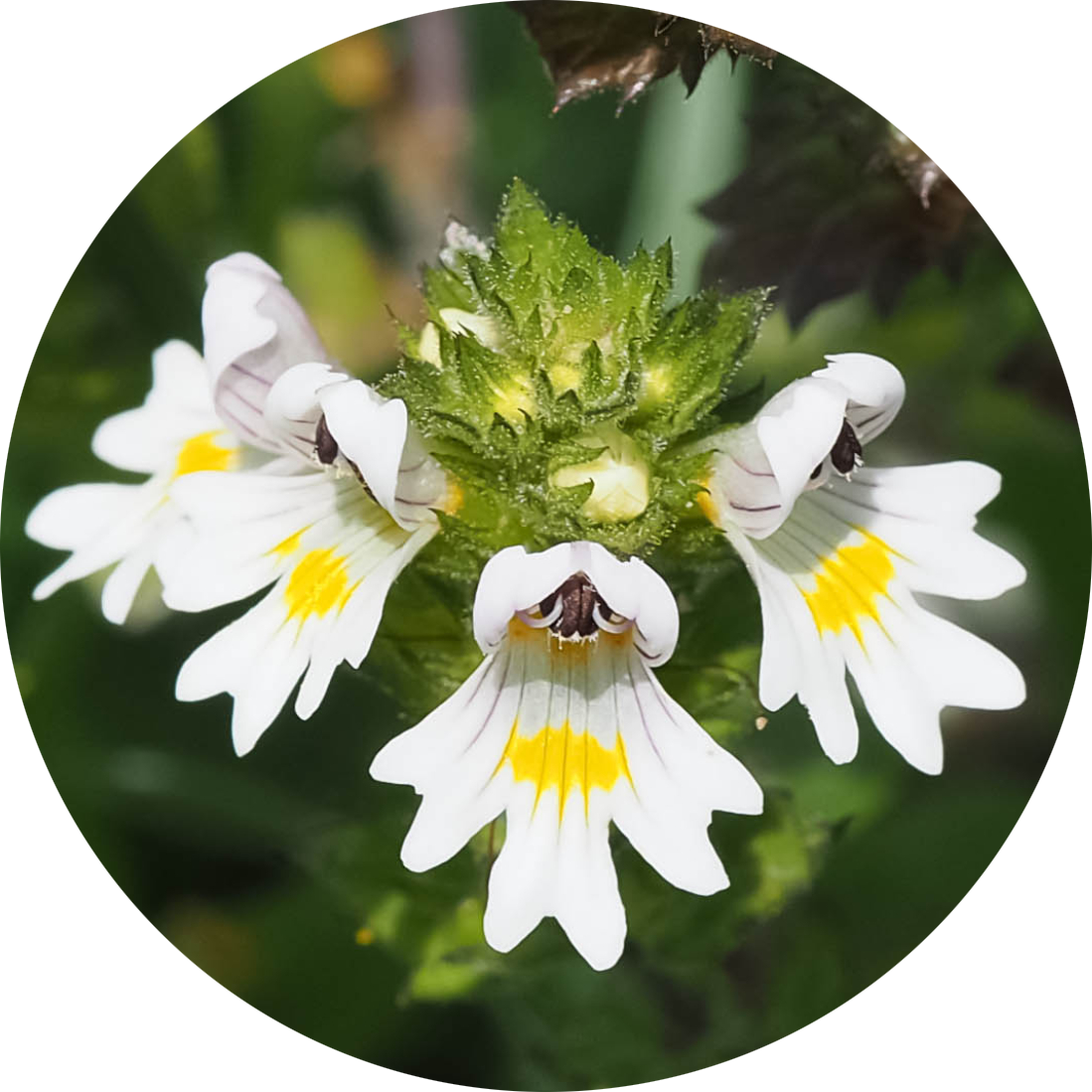(Euphrasia officinalis)
Eyebright is a plant that has a special place in Slavic tradition and mythology; in Christianity it is dedicated to Saint Vitus, a saint from Sicily who was executed in year 303 AD during the persecution of the followers of the new faith, even though he had successfully cured Emperor Diocletian’s son. According to some theories, the cult of Saint Vitus originates from Svetovit, the old pagan god of abundance and war of the Polabian Slavs, precisely because of his name’s similarity with the Sicilian saint’s name. Saint Vitus is celebrated on 15 June according to the old Julian calendar, which is 28 June according to the new Gregorian calendar. For the Serbs this date is additionally special as it preserves the memory of the 1389 Battle of Kosovo and the death of Serbian Prince Lazar who was canonised soon after this fatal battle which marked the beginning of Ottoman rule in Serbia. St Vitus Day – Vidovdan – is not only a day of remembrance but also a look into the future. It is said that, on this day, it is possible to predict what lies ahead with the help of a special magical plant – eyebright. As the name of the saint, the sacred holiday and the plant are all connected with the eyes and eyesight, girls used to believe that they would be able to “see” their future partner with the help of eyebright; water in which this plant was immersed on the eve of the holiday was considered healing – that it protected the eyes and healed those affected by eye diseases.
The scientific name of the plant, Euphrasia officinalis, comes from the ancient Greek name of one of the three graces, the daughters of Zeus and Hera. In addition to Thalia, who was blessed with bloom, and Aglaia, the symbol of brightness, Euphrosyne was famous for her joyfulness. The same name in ancient Greek was given to a small bird – common linnet; a legend has it that the bird was the first to discover the healing properties of eyebright which it used to clean the eyes of its little chicks. Even though this plant bears the ancient Greek name, it seems to have gone unnoticed during the period of Classical Antiquity and is not mentioned, unlike many other plans, in the records of ancient physicians Dioscorides, Pliny or Galen, neither by Arab healers. The first written record dates back to 1305, when Nicholas Culpeper, an English botanist, herbalist and astrologer, associated it with the zodiac sign of Leo and claimed that it improved memory, strengthened the brain and provided “clear vision”. In English, as in most European languages, the popular name for this plant is associated with eyes and eyesight – eyebright, Augentrost, casse-lunettes, ojo brillante… Traditionally, in accordance with this, it was used to treat eye diseases, conjunctivitis, tear duct disorders, cataracts and glaucoma.
DOES EYEBRIGHT REALLY HEAL EYES?
A report published by the European Medicines Agency states that the plant owes its healing properties to the high content of flavonoids: apigenin, luteolin, kaempferol, rhamnetin and quercetin, as well as polyphenols, phenolic acids, tannins and iridoids. Thanks to them, it has anti-inflammatory, antioxidant, regenerative, antimicrobial, antifungal, antiviral, anticancer, hypotensive, hepatoprotective, antiepileptic and anticataral properties. It is precisely the antioxidant, anti-inflammatory and regenerative properties that have a healing effect in eye disorders. The flavonoids luteolin and quercetin have been proven to inhibit immune cells that release histamines, which is the main cause of pollen allergies, symptoms of which are sometimes watering eyes. Eyebright has proven its anti-inflammatory properties in eye disorders in clinical studies, so today it is a valuable ingredient in eye drops that repair the effects of oxidative stress caused by UVB rays and stimulate regeneration. Eyebright has been proven to reduce redness of eyes, swelling of the conjunctiva and eyelids, tingling sensation and secretion disorders.
Therefore, eyebright fully deserves its name. However, it would be strange if a plant with such a wide range of action should have a positive effect only on the eyes. Laboratory research has proven its effectiveness against a number of microbes, including Enterococcus faecalis, Escherichia coli, Klebsiella pneumoniae, Staphylococcus aureus, S. epidermidis, Pseudomonas aeruginosa, and Candida albicans. By the same virtue this plant works well against a large number of infections, which confirms its traditional use against flu, colds and respiratory infections. Glycoside aucubin found in it has a proven power to protect against harmful radicals, toxins and viruses, so it is especially beneficial for the liver and for the prevention of fibrosis. Eyebright leaf also has an antihyperglycemic effect – it is excellent for the prevention and treatment of diabetes. And just as eyebright stimulates the regeneration of eyes and protects them from harmful sun rays, it has an equally beneficial effect on the skin.
HEALING AND REJUVENATING
Eyebright is extremely therapeutic for the skin, it effectively fights free radicals and thus protects the skin’s immunity, which is especially pronounced in photoaging – skin-ageing caused by exposure to harmful ultraviolet rays. Photoaging is associated with an increase in matrix metalloproteinase and altered collagen metabolism, resulting in wrinkled and sagging skin prone to inflammation. Eyebright has been proven to alleviate oxidative stress, proinflammatory activity and cellular apoptosis, which results in youthful and strong skin, reduction in wrinkles and in dark circles under the eyes. Some of the other consequences of UV radiation that impair the aesthetics are sunspots, uneven complexion and dry and cracked skin. This is where the ability of this plant to accelerate the healing of epithelium, prevent inflammation and swelling and strengthen immunity comes into play. Eyebright also has an astringent effect – it effectively shrinks pores and thus prevents the formation of acne. This is how eyebright confirms the well-known fact that health and beauty go hand in hand.
For all these reasons, eyebright extract is an integral part of the Anti-rides Antiage Cream from the Herba Svet laboratory. Thanks to the synergy of top quality ingredients including among others, peptides, coenzyme Q10, jojoba, argan oil, shea butter and edelweiss extract, this eye cream effectively smoothes fine lines, promotes collagen building, gives skin elasticity and also prevents and smoothes hyperpigmentation and dark and swollen circles under the eyes. With eyebright we will surely see better and fall in love with our reflection in the mirror.

